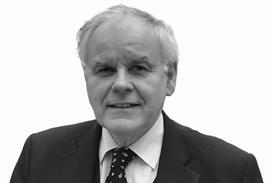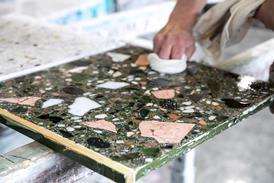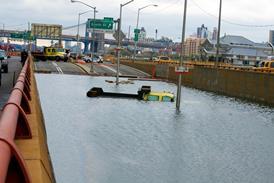The most recent arrival to an emblematic site in the nearby radio city of Hilversum is the sports giant Nike. It has taken the unusual step of creating a sustainable campus of five buildings for the heart of its European operations. Rare for Holland, the tastefully integrated group of low-rise buildings which form Nike Europe will sit 3·5 m above sea level.
Retaining Hilversum's once flamboyant horse and running tracks has been crucial to the company's image. The site was formerly in use as a horse trotting track and is located next to sports facilities with a grandstand dating from the 1928 Olympics.
Phase 1 covers 35 000 m² and comprises five buildings, including four office wings and a central common building. Phases 2 and 3 will consist of a further 10 000 and 15 000 m² respectively.
Each of the four office buildings is organised around an enclosed, daylit four-storey atrium, which maximises fresh air and natural light. The floorplates are optimised in size and shape to give around 1500 m² per floor, all occupants being within 5·4 m of an operable window. The roof profiles curve to enhance both daylighting and the potential for photovoltaic placement.
The centrally located common building includes a multipurpose space for athletics and assemblies, as well as a multi-level terrace with a planted roof.
Talking to Nike's project director Jim Stalknecht, one soon discovers that Nike was keen to win green medals for its environmentally sensitive approach to construction. Stalknecht lists the environmental benefits of massive thermal insulation, ground water cooling and maximum use of daylighting, as evidence of the company's eco-credentials.
PVC and other perceived toxic materials have been banned. The timber floor of the gymnasium is made from sustainable woodland, while the floors to the offices are constructed from recycled sports shoes. All rainwater is stored and used for lavatories and garden irrigation.
While any British m&e consultancy worth its salt would not only be capable of establishing this design criteria, but also producing design drawings and handling the site commissioning, the Dutch tend to outsource to a number of specialists. This runs the risk of a greater number of co-ordination meetings and a higher than normal fee bill.
Nevertheless, given the designers' remit, one would expect to find a strongly ecological building with evidence of climatically adaptive architecture. That said, initial impressions of what the architects intended were not favourable.
The buildings, cast in traditional form, were presented to the building services engineers in the time-honoured manner of 'there you are, now make it work'. Fortunately, Leo Koolman and his team at the Rotterdam firm of Techniplan BV are doing just that.
‘Massive thermal insulation, ground water cooling and daylighting is evidence of Nike’s eco-credentials’
The project managers, Multi-vastgoed BV, gave the task of producing the most viable design criteria and energy systems to international consultants DHV. Engineer John Berg and his staff set out to find viable low energy solutions. This has translated into a thick and highly insulated envelope, with 620 mm walls packed with 140 mm of Rockwool, giving a calculated thermal conductivity from 0·4 to 0·25 W/m²K. With even thicker insulation in the roofs, these low energy measures cost an extra £30 000. Improved fenestration and a 36% glazing ratio added a further £16 500 to the bill.
These measures, combined with a naturally ventilated garage for 327 cars, produced buildings with a low requirement for thermal energy. That said, the building is equipped with fan coil units, these are run off ground water for direct cooling. The building's heating runs off the local district heating system.
Four office buildings have blinds on three floors to shield against low level sun, especially from the more intrusive western aspect. Top floor glazing is largely set back, with a roof overhang and an internal reflective rooflight. This is very much an architectural device rather than a means to illuminate the ground floors.
Another surprise was the absence of photovoltaics or any other form of solar technology on south facing walls, although early in 1997 photovoltaic technology's economic case was still unproven by the Dutch government.
Environmental engineering Thermal energy from an aquifer provides the essential source to cope with cooling loads. Ground water is used in the air handling units for computer rooms, and the fan coil units, which are located behind suspended ceilings in the usual fashion.
At times of peak demand the heat pumps boost the ground water, functioning like a normal water-cooling chiller with a dry cooler. This cooler can also provide free cooling when external temperatures fall below 68C. When extra heat is required the heat pump pulls a final top-up from the neighbourhood district heating system.
As the buildings possess high thermal capacities, no perimeter heating has been deemed necessary. The only use of radiators is on the fourth floors, where larger glazed areas and light steel construction requires some radiant heating.
All the buildings recycle rainwater, which is stored in underground tanks. The collected water is filtered, stored and then pumped to supply the toilets, kitchens and washing facilities. Make-up water comes from conventional potable mains supplies.
Within a total construction cost of £150 million, the extra cost for these energy saving technologies has been put at about £1 million, with a payback period estimated at five to seven years. Also important to Nike were the favourable tax concessions and grants which covered half of the extra capital cost.
Downloads
Figure 1: Building section
Other, Size 0 kbFigure 2: Water recycling system
Other, Size 0 kb
Source
Building Sustainable Design
Postscript
Bill Holdsworth is a consulting engineer and freelance technical writer and broadcaster based in The Netherlands.




















